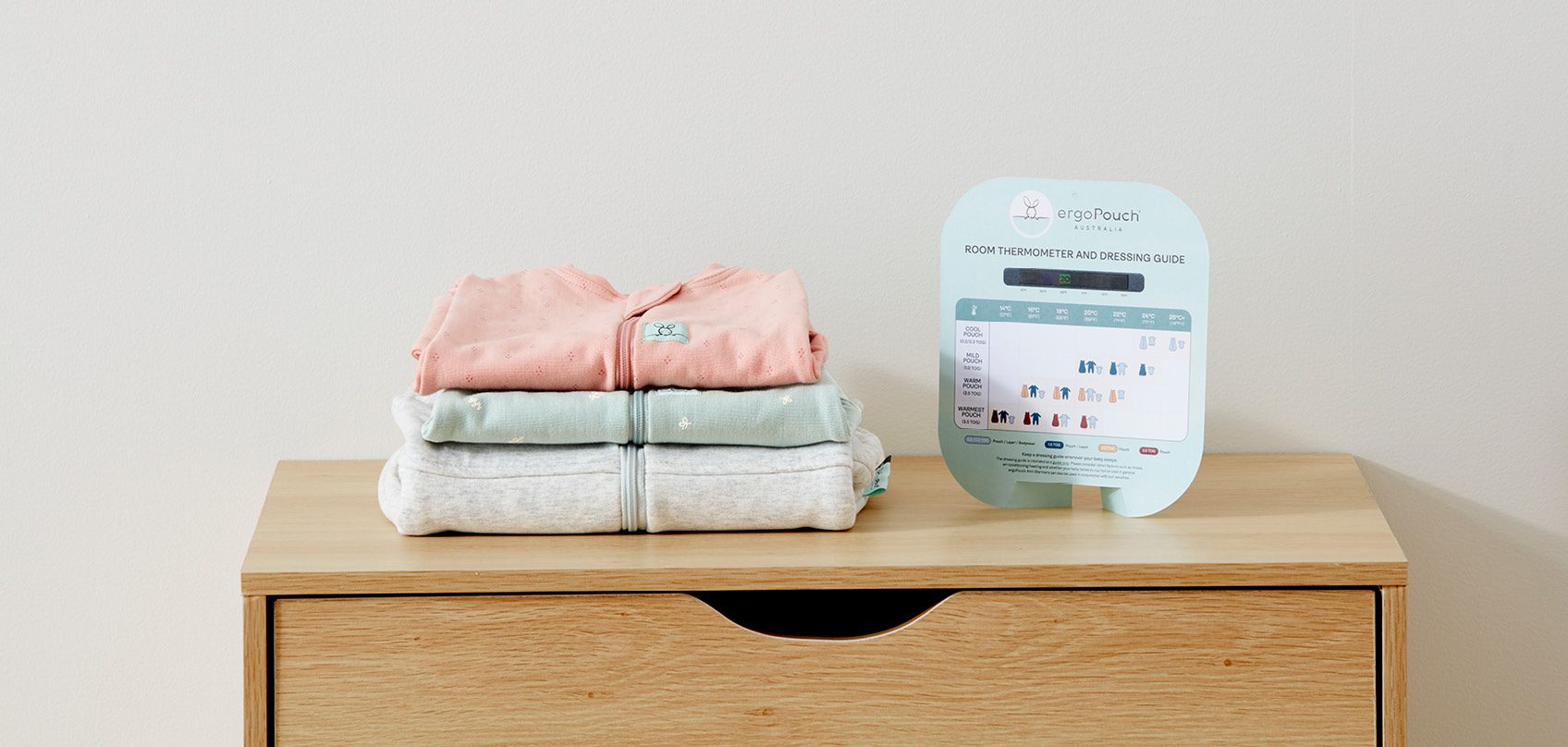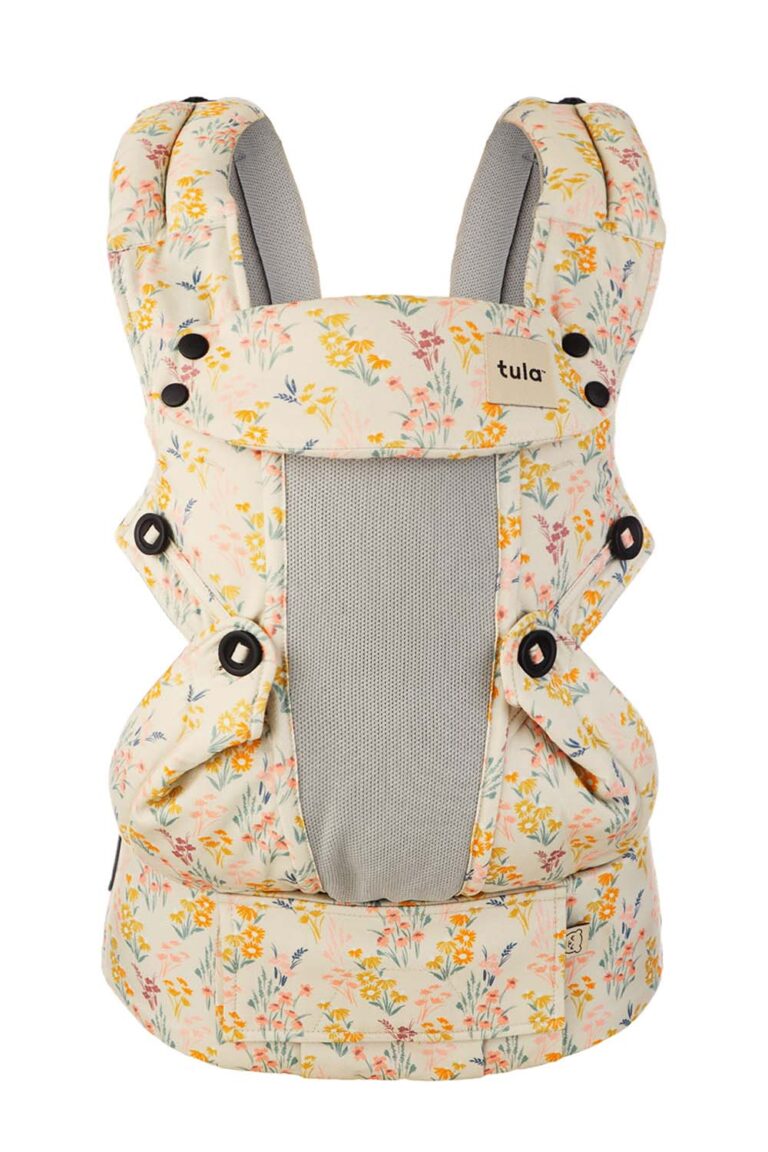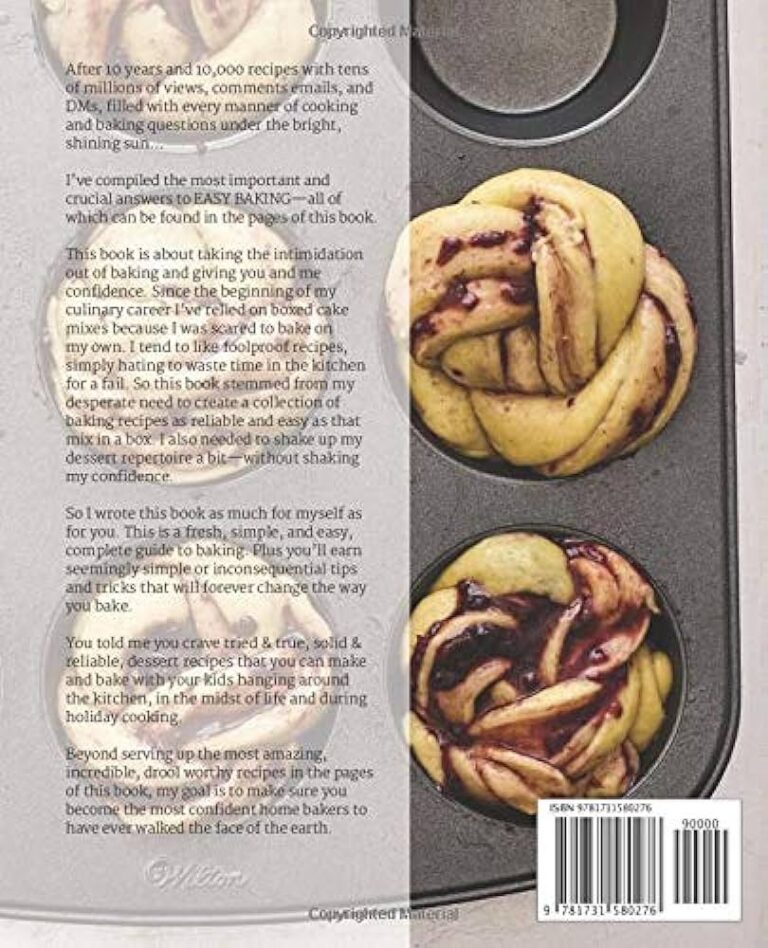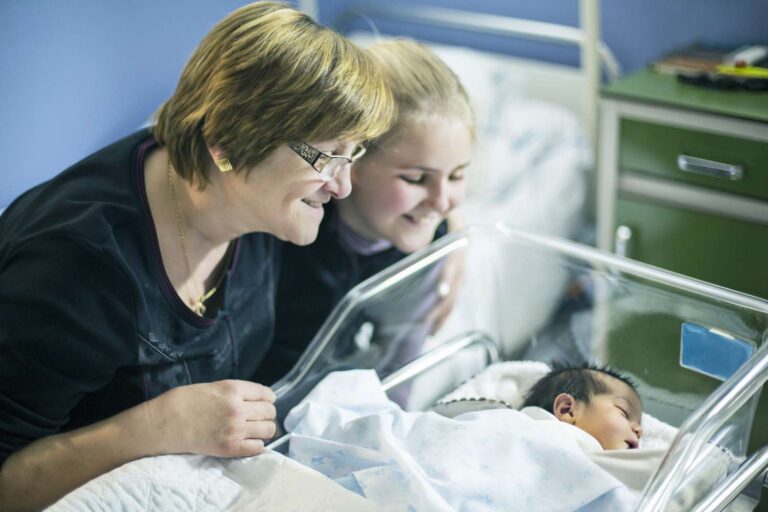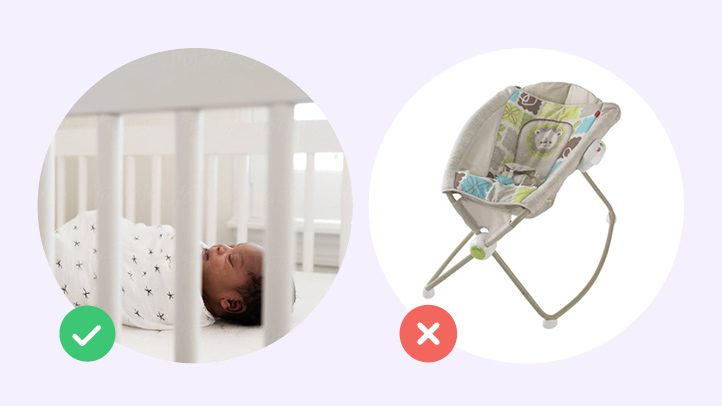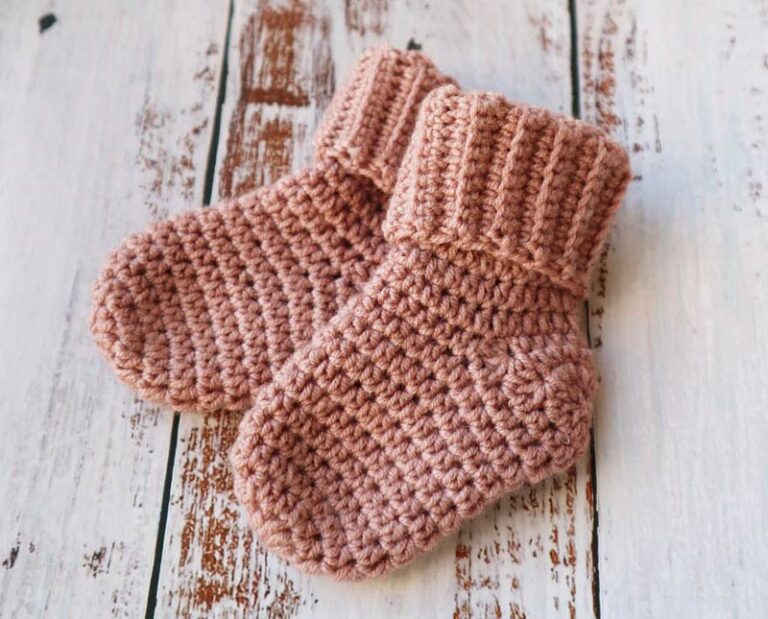How to Dress Baby for Sleep 2.5 Tog: Expert Tips for a Cozy Night
To dress a baby for sleep with a 2.5 tog rating, the recommended attire would typically be a one-piece footed sleeper with feet and/or long pajama sleeves and bottoms with socks. This ensures comfort and warmth throughout the night.
It is important to choose the right clothing based on the room temperature and tog rating to provide optimal sleep conditions for the baby. The tog rating indicates the warmth of the sleepwear, with higher tog ratings suitable for colder temperatures.
By dressing the baby appropriately, parents can ensure their little one stays cozy and comfortable while sleeping.

Credit: www.happiestbaby.com
Understanding Tog Rating For Baby Sleepwear
When it comes to dressing your baby for sleep, there are a few important factors to consider. One such factor is the TOG rating of the sleepwear. TOG rating refers to the thermal insulation of the fabric and indicates how warm the sleepwear will keep your baby. Understanding TOG rating is crucial in ensuring that your little one stays comfortable and safe throughout the night.
What Is Tog Rating?
TOG rating, short for Thermal Overall Grade, is a measurement that assesses the warmth and insulation provided by baby sleepwear. The TOG rating scale ranges from 0.5 to 4.0, with higher numbers indicating warmer sleepwear. Choosing the appropriate TOG rating is essential in keeping your baby cozy and maintaining a comfortable sleeping environment.
How Does Tog Rating Affect Baby’s Sleep?
The TOG rating of your baby’s sleepwear plays a significant role in creating a comfortable sleeping environment. It helps regulate your baby’s body temperature, ensuring they stay warm without overheating. Using sleepwear with the appropriate TOG rating can help prevent night sweats or chills, promoting a more restful and uninterrupted sleep for your little one.
Importance Of Choosing The Right Tog Rating For Baby Sleepwear
Choosing the right TOG rating for your baby’s sleepwear is crucial for their comfort and safety. It is essential to consider the ambient room temperature and season while selecting sleepwear with the appropriate TOG rating. Using sleepwear with a too high or too low TOG rating can lead to discomfort or even pose a risk of overheating or chilling, which may disrupt your baby’s sleep and affect their well-being.
Below is a table summarizing the recommended TOG ratings for different room temperatures:
| Room Temperature (°C) | Recommended TOG Rating |
|---|---|
| 24°C and above | 0.2 TOG or lower |
| 20-24°C | 1.0 TOG |
| 18-20°C | 2.5 TOG |
| 16-18°C | 2.5 TOG or 3.5 TOG |
| 16°C and below | 3.5 TOG or higher |
Remember to regularly check your baby’s comfort by feeling their chest or back, ensuring they are not too warm or too cold. Adjusting the TOG rating of their sleepwear according to the room temperature will help them have a peaceful and cozy night’s sleep.
By understanding TOG rating and selecting the right sleepwear, you can create a comfortable and safe sleep environment for your baby, ensuring they get the rest they need for healthy growth and development.
Determining The Ideal Room Temperature For Baby Sleep
To determine the ideal room temperature for baby sleep, it’s important to consider the 2. 5 Tog rating. This guide will help you dress your baby appropriately for a comfortable and safe sleep environment.
Maintaining The Right Temperature For Baby’s Comfort
When it comes to ensuring a good night’s sleep for your little one, maintaining the right room temperature is crucial. Babies are sensitive to temperature changes and can easily become too hot or too cold, leading to discomfort and restless sleep. It’s important to create an environment that promotes a cozy and comfortable sleeping environment.
How To Check The Room Temperature Effectively
Checking the room temperature effectively is the first step in determining the ideal sleep environment for your baby. A reliable and accurate thermometer is essential for this task. Place the thermometer at the same level as your baby’s sleeping area, away from drafts and direct heat sources. Ensure that the thermometer is easily visible and accessible so you can monitor the temperature regularly.
Here are some pointers to help you ensure accurate room temperature readings:
- Don’t rely on your senses alone. Room temperatures may vary throughout the house, so it’s best to use a thermometer for accurate readings.
- Avoid placing the thermometer near windows or doors, as these areas may have different temperatures due to drafts.
- Keep the thermometer away from direct sunlight or heat sources, as this can affect its accuracy.
- Check the temperature several times throughout the day to ensure consistency.
The Correlation Between Room Temperature And Tog Rating
Understanding the correlation between room temperature and the TOG (thermal overall grade) rating of your baby’s sleepwear is essential for dressing them appropriately. The TOG rating indicates the insulation level of a fabric and helps parents choose the right sleepwear for different room temperatures.
Here is a simple correlation between room temperature and TOG rating:
| Room Temperature (°C) | Recommended TOG Rating |
|---|---|
| 24°C and above | 0.5 TOG or lower |
| 20-24°C | 1.0 TOG |
| 16-20°C | 2.5 TOG |
| Below 16°C | 2.5 TOG or higher with extra layers if needed |
Remember, these are general guidelines, and every baby is different. You should also consider other factors, such as your baby’s age, personal preferences, and any underlying health conditions, when determining the appropriate TOG rating for their sleepwear.
By maintaining the right room temperature and dressing your baby in sleepwear with an appropriate TOG rating, you can create a comfortable and safe sleep environment, promoting better sleep for your little one.
Dressing Baby For Sleep With 2.5 Tog Sleepwear
When it comes to dressing your baby for sleep with 2. 5 tog sleepwear, it’s important to choose the right clothing to keep them warm and comfortable throughout the night. With a 2. 5 tog rating, a one-piece footed sleeper or long pajama sleeves and bottoms with socks should provide the perfect level of warmth for your little one.
What Is Considered 2.5 Tog Sleepwear?
In the world of baby sleepwear, Tog rating is the unit used to measure the warmth and insulation provided by a particular fabric or material. A Tog rating of 2.5 indicates that the sleepwear is moderately warm and ideal for use during cooler months or in rooms with a temperature range of 16-20 degrees Celsius (60-68 degrees Fahrenheit).
Advantages Of Using 2.5 Tog Sleepwear For Baby
There are several advantages to dressing your baby in 2.5 Tog sleepwear:
- Optimal warmth: 2.5 Tog sleepwear offers just the right amount of insulation to keep your baby comfortably warm without overheating.
- Regulates temperature: The material of 2.5 Tog sleepwear is designed to regulate your baby’s body temperature, ensuring they stay cozy throughout the night.
- Safe and comfortable: With 2.5 Tog sleepwear, you can rest assured that your baby is sleeping in a safe and comfortable environment, helping them achieve a better quality of sleep.
- Versatility: 2.5 Tog sleepwear can be used in a variety of climates, making it a versatile option for year-round use.
Factors To Consider When Choosing 2.5 Tog Sleepwear
When selecting 2.5 Tog sleepwear for your baby, it’s essential to consider the following factors:
- Room temperature: Take into account the temperature of the room where your baby sleeps to ensure the sleepwear provides the right level of warmth.
- Material: Look for sleepwear made from breathable and hypoallergenic materials to promote a comfortable and safe sleep environment for your little one.
- Fit and comfort: Choose sleepwear that fits well and allows your baby to move freely. Avoid sleepwear with loose strings or buttons that can pose a choking hazard.
- Season and climate: Consider the season and climate you live in when selecting 2.5 Tog sleepwear. You may need to adjust the layering or choose a different Tog rating accordingly.
By considering these factors, you can ensure that your baby is dressed appropriately for sleep using 2.5 Tog sleepwear, providing them with the perfect combination of warmth and comfort throughout the night.
Layering Techniques For Optimal Comfort
Layering techniques are crucial for optimal comfort when dressing your baby for sleep with a 2. 5 Tog rating. By using a combination of a one-piece footed sleeper, long pajama sleeves and bottoms, and socks, you can ensure your baby stays warm and cozy throughout the night.
Layering Strategies For Different Room Temperatures
When it comes to dressing your baby for sleep, the room temperature plays a crucial role in determining the number of layers your little one needs. It’s important to ensure that your baby is neither too hot nor too cold during their sleep time. Here are some layering strategies that you can follow based on different room temperatures:
| Room Temperature | Layering Strategy |
|---|---|
| Below 64°F (18°C) |
|
| 64°F-68°F (18°C-20°C) |
|
| Above 68°F (20°C) |
|
Choosing Suitable Materials For Layering
The choice of materials for layering is crucial as it directly impacts your baby’s comfort during sleep. Opt for soft and breathable fabrics that allow proper airflow and regulate body temperature. Some suitable materials for layering include organic cotton, bamboo, or merino wool. These materials are gentle on your baby’s delicate skin and provide optimal comfort throughout the night.
Tips For Layering Without Overheating Or Causing Discomfort
Proper layering is essential to prevent overheating or causing discomfort to your little one. Here are some tips to keep in mind:
- Ensure that your baby’s clothing is neither too tight nor too loose. Snug-fitting but comfortable clothing is ideal.
- Check your baby’s neck, chest, and back to make sure they are not sweating excessively. This is an indication that they might be too hot.
- Regularly monitor the room temperature with a reliable thermometer to ensure it remains within a comfortable range.
- Avoid using heavy blankets, especially if your baby is already wearing a sleep sack or a sleep suit bag.
- Consider using temperature-regulating sleepwear that adapts to your baby’s body temperature.
Additional Tips For Ensuring A Cozy Night’s Sleep
To ensure a cozy night’s sleep for your baby, dress them in a 2. 5 tog sleep sack or a one-piece footed sleeper with socks. Keep soft pants on hand in case their legs feel chilly during the night.
Creating A Sleep-friendly Environment
Setting up a sleep-friendly environment is essential for your baby to have a cozy night’s sleep. Here are a few tips to create the perfect sleeping environment:
- Temperature control: Maintain a room temperature between 68-72°F (20-22°C) as it is considered optimal for baby’s sleep. Use a thermometer or a smart thermostat to monitor the temperature.
- Keep it dark and quiet: Use blackout curtains or blinds to block out any external light and minimize any noise disturbances that could disrupt your baby’s sleep.
- Soothing sounds: Soft, calming sounds such as white noise or lullabies can help your baby relax and fall asleep faster. You can use a white noise machine or play soft music to create a soothing atmosphere.
- Comfortable mattress: Make sure your baby’s mattress is comfortable and supportive. Choose a firm mattress that meets safety standards and fits snugly into the crib or bassinet.
Importance Of Safe Sleep Practices
Apart from creating a sleep-friendly environment, it is crucial to follow safe sleep practices to ensure your baby’s safety during sleep. Here are some important guidelines to keep in mind:
- Back to sleep: Always place your baby on their back to sleep, as it is the safest position and reduces the risk of Sudden Infant Death Syndrome (SIDS).
- Remove loose bedding: Avoid using blankets, pillows, or stuffed animals in your baby’s sleep area. These items can pose a suffocation hazard. Opt for sleep sacks or wearable blankets instead.
- Keep the crib bare: Ensure that the crib is free of any unnecessary items such as bumper pads or crib tents. These can increase the risk of entrapment or suffocation.
- Avoid overheating: Be mindful of your baby’s clothing and bedding. Overheating can increase the risk of SIDS. Use a sleep sack with an appropriate tog rating, like a 2.5 tog sleepwear, to regulate your baby’s body temperature.
Transitioning From Swaddles To Sleepwear With 2.5 Tog Rating
Transitioning your baby from swaddles to sleepwear with a 2.5 tog rating can help them sleep comfortably and safely throughout the night. Here’s how you can make the transition:
- Monitor your baby’s readiness: Look for signs that your baby is ready to transition, such as rolling over or showing discomfort in swaddles.
- Choose the right sleepwear: Opt for sleepwear, such as sleep sacks or sleep suits, with a 2.5 tog rating. This will provide the right amount of warmth for your baby without the need for additional blankets.
- Gradual transition: Start by leaving one arm or both arms out of the swaddle and gradually transition to sleepwear. Make sure the sleepwear is properly fitted to prevent any risks of suffocation or entanglement.
- Consistency and comfort: Stick to a consistent bedtime routine to help your baby adjust to the new sleepwear. Choose sleepwear that is comfortable and allows for easy movement.
By creating a sleep-friendly environment, following safe sleep practices, and transitioning from swaddles to sleepwear with a 2.5 tog rating, you can ensure your baby has a cozy and safe night’s sleep.
Frequently Asked Questions For How To Dress Baby For Sleep 2.5 Tog
What Baby Should Wear With 2.5 Tog Sleep Bag?
Babies wearing a 2. 5 tog sleep bag should wear a one-piece footed sleeper with long pajama sleeves and bottoms with socks.
Is 2.5 Tog Too Heavy?
A 2. 5 tog rating is not too heavy for a baby. It is a comfortable and appropriate bedding choice for colder temperatures.
What Is 2.5 Tog Equivalent To?
2. 5 tog is equivalent to a one-piece footed sleeper with long sleeves, pajama bottoms, and socks, suitable for cold weather.
Do I Need A 2.5 Tog Sleep Sack?
No, it is not necessary to use a 2. 5 tog sleep sack for your baby. The appropriate tog rating will depend on the room temperature and your baby’s clothing. It’s important to dress your baby in layers to ensure they are not too hot or too cold during sleep.
Conclusion
To ensure your baby’s comfort and safety during sleep, dressing them in appropriate clothing is essential. Understanding the TOG rating system can help you choose the right sleepwear for different room temperatures. A one-piece footed sleeper with long pajama sleeves and bottoms, along with socks, is a great option for a 2.
5 TOG rating. Additionally, you can layer clothing to provide extra warmth during colder nights. By following these guidelines, you can ensure that your baby is cozy and snug throughout the night.
